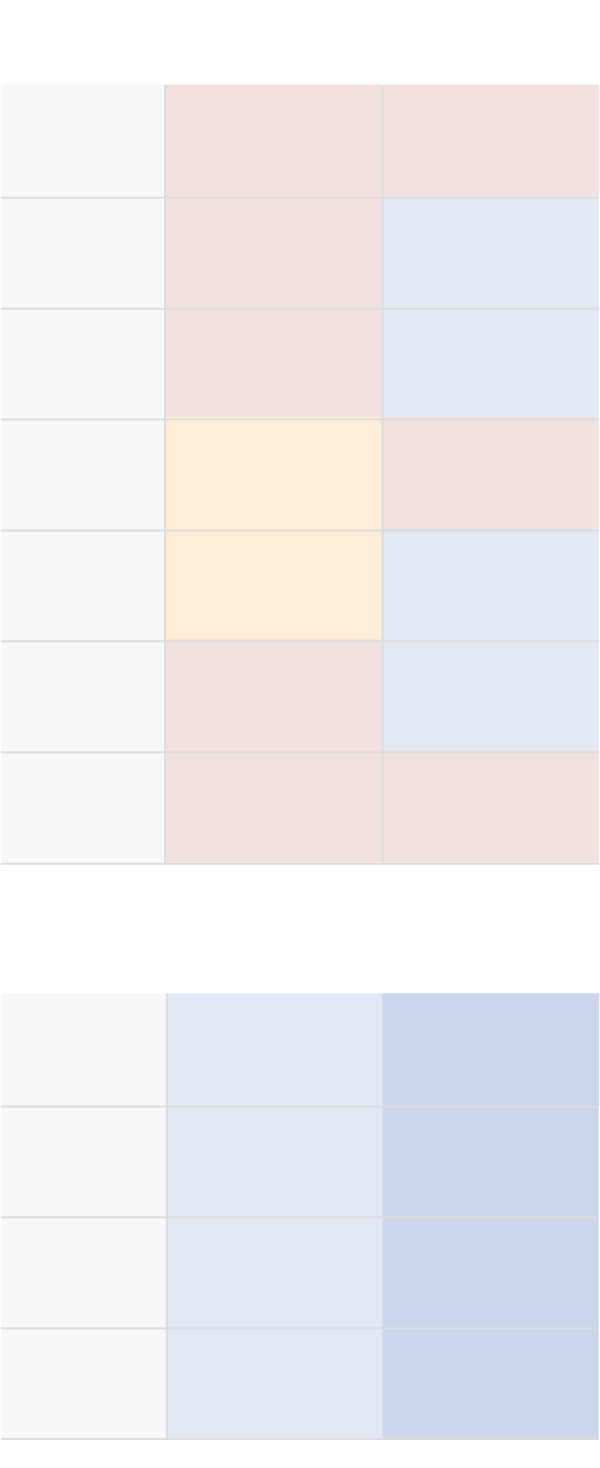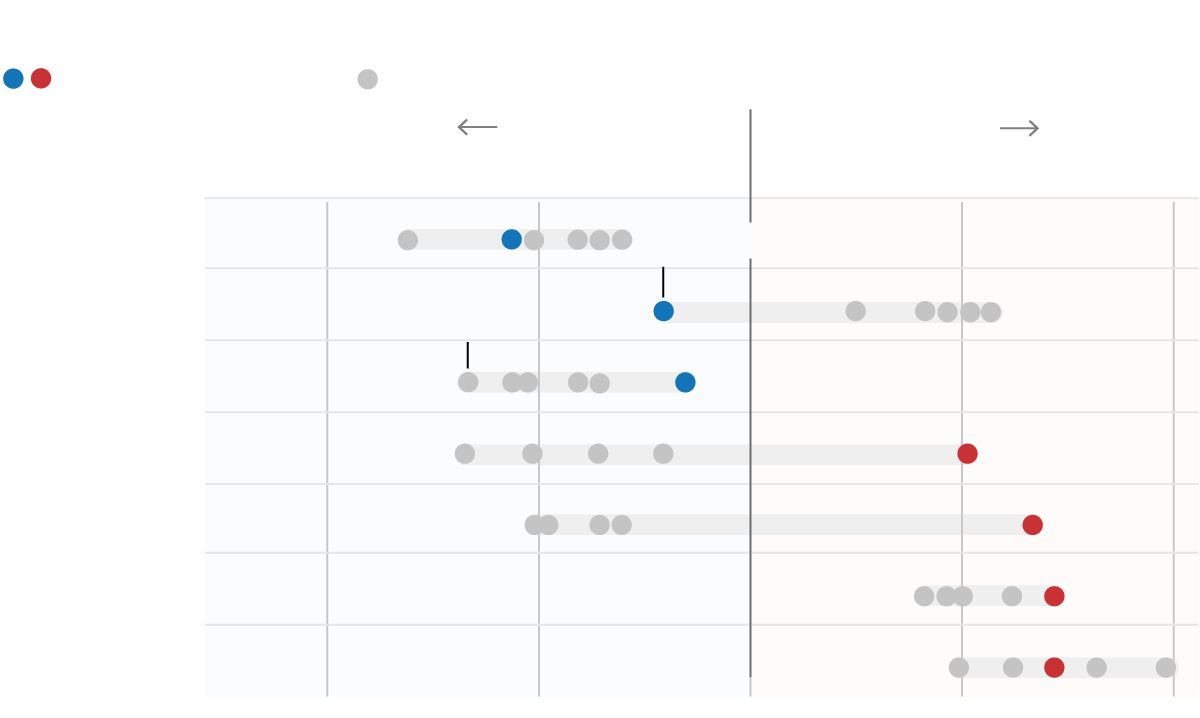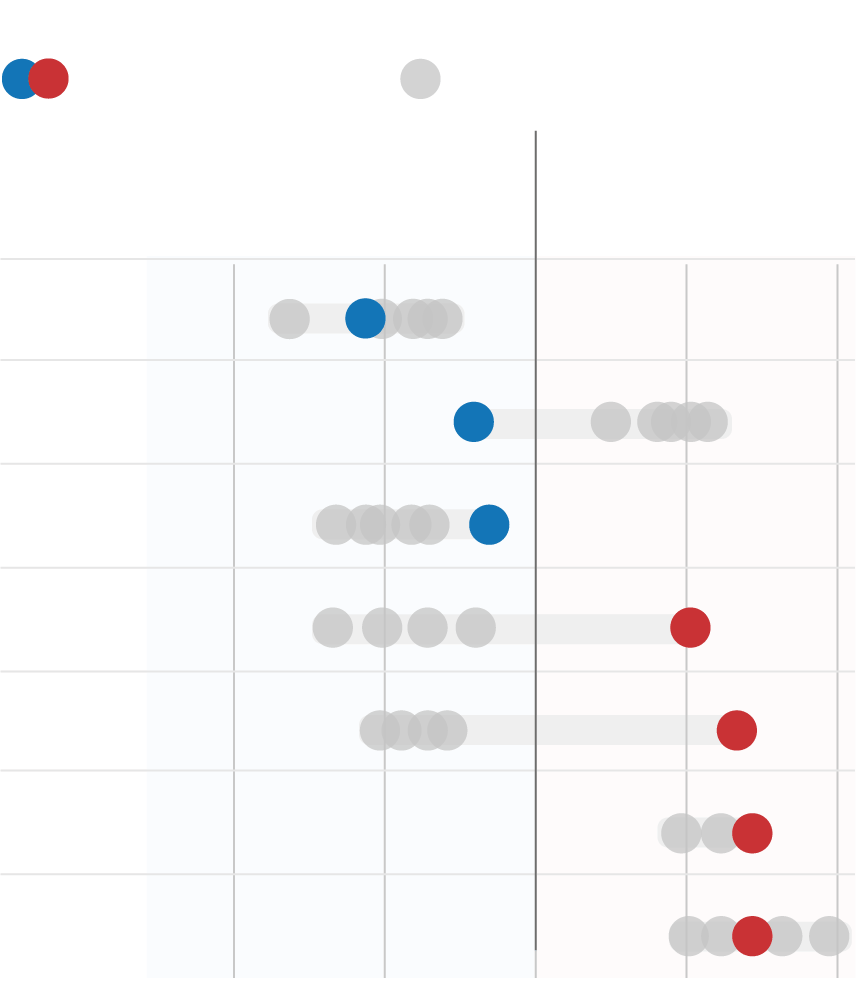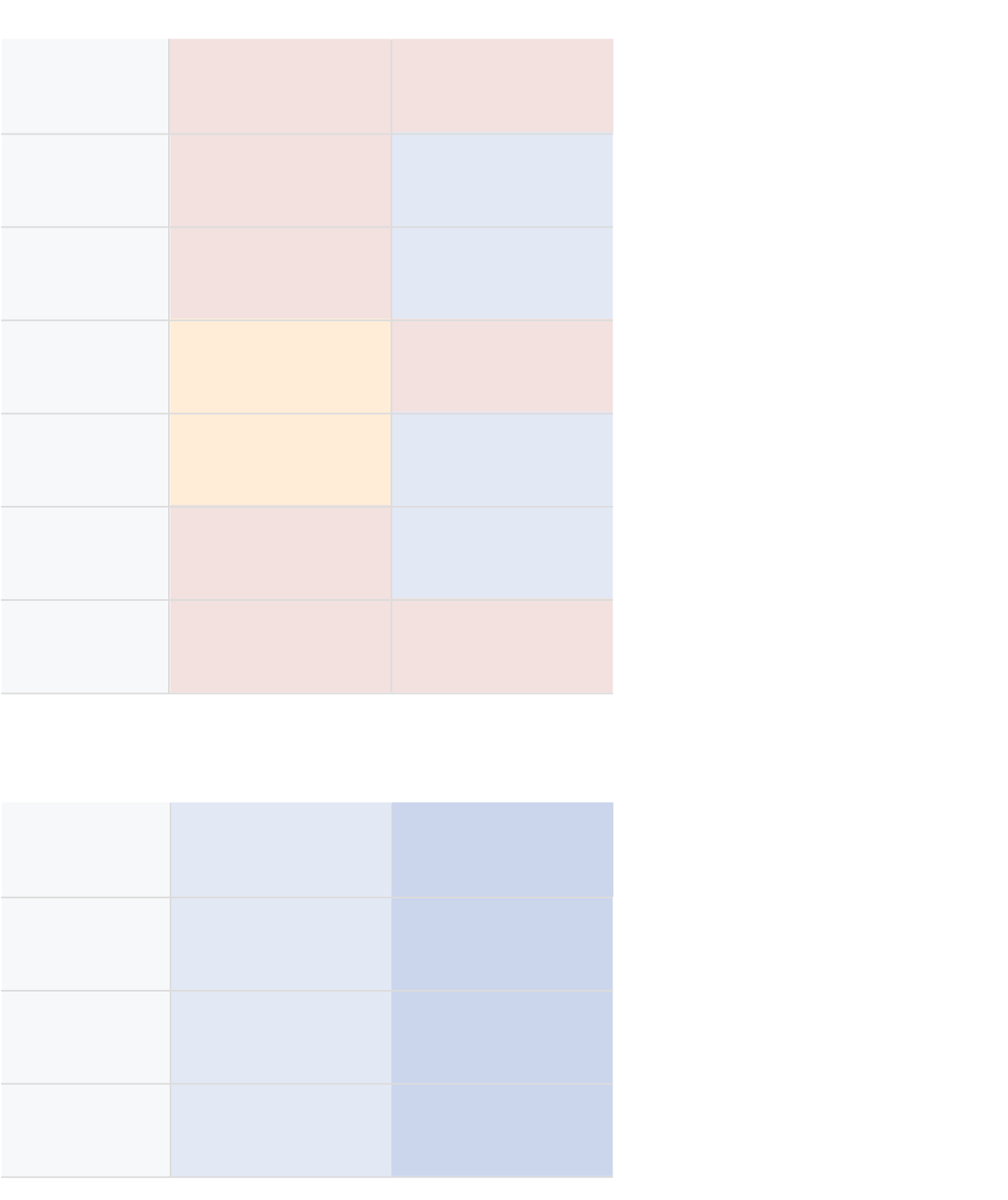Election forecasters think this year’s presidential race is too close to call. Nevada? A complete tossup. Pennsylvania? Anybody’s guess.
The race looks clearer to Seth Keshel, a Trump supporter and former Army intelligence captain who made his own forecasts for November. That’s in part because, unlike other election modelers, he factors in widespread election fraud — something that officials say has not happened in modern elections — into his predictions, skewing them in favor of former President Donald J. Trump.
The unusual work has made him a celebrity among election deniers, even earning him a 40-state speaking tour in front of conservative crowds and recognition from Mr. Trump, who has lauded him as “highly respected.”
Pennsylvania? It’s going to Mr. Trump, Mr. Keshel predicts, partly because Democrats failed to pass election laws that he says could “rig” the race in favor of Vice President Kamala Harris. Michigan? Mr. Trump could lose there, he said, partly because the Democrats control all three levels of government, giving them the ability to enable widespread fraud.
“I would say it’s clear that Trump is performing better than he did in 2020,” Mr. Keshel said in an interview.
Election deniers like Mr. Keshel have spent four years since Mr. Trump’s electoral defeat in 2020 blaming the loss on a conspiracy theory involving voter fraud conducted through mail-in voting, ballot harvesting and automatic voter registration. They continue to push the idea even though courts and election officials have repeatedly refuted and dismissed the claims. In truth, voting fraud in the United States is extremely rare.
Keshel vs. the Polls
Mr. Keshel bases his calculations on widespread voter fraud, a widely debunked claim. He tends to see a race that favors Mr. Trump even more than an average of various polls calculated by the election data team at The New York Times.
#g-table-box {
max-width:600px;
}
#g-table-box ,
#g-table-box .g-artboard {
margin:0 auto;
}
#g-table-box p {
margin:0;
}
#g-table-box .g-aiAbs {
position:absolute;
}
#g-table-box .g-aiImg {
position:absolute;
top:0;
display:block;
width:100% !important;
}
#g-table-box .g-aiSymbol {
position: absolute;
box-sizing: border-box;
}
#g-table-box .g-aiPointText p { white-space: nowrap; }
#g-table-Artboard_1 {
position:relative;
overflow:hidden;
}
#g-table-Artboard_1 p {
font-family:nyt-franklin,arial,helvetica,sans-serif;
font-weight:regular;
line-height:19px;
height:auto;
opacity:1;
letter-spacing:0em;
font-size:16px;
text-align:left;
color:rgb(55,116,177);
top:1.3px;
position:static;
text-transform:none;
padding-bottom:0;
padding-top:0;
mix-blend-mode:normal;
font-style:normal;
}
#g-table-Artboard_1 .g-pstyle0 {
font-weight:700;
height:19px;
color:rgb(0,0,0);
position:relative;
}
#g-table-Artboard_1 .g-pstyle1 {
font-weight:500;
line-height:15px;
height:15px;
font-size:13px;
text-align:center;
color:rgb(119,118,119);
top:1px;
position:relative;
}
#g-table-Artboard_1 .g-pstyle2 {
font-weight:600;
height:19px;
color:rgb(0,0,0);
position:relative;
}
#g-table-Artboard_1 .g-pstyle3 {
font-weight:700;
height:19px;
text-align:center;
color:rgb(185,63,61);
position:relative;
}
#g-table-Artboard_1 .g-pstyle4 {
font-weight:700;
height:19px;
text-align:center;
position:relative;
}
#g-table-Artboard_1 .g-pstyle5 {
font-weight:700;
height:19px;
text-align:center;
color:rgb(230,153,49);
position:relative;
}
#g-table-Artboard_2 {
position:relative;
overflow:hidden;
}
#g-table-Artboard_2 p {
font-family:nyt-franklin,arial,helvetica,sans-serif;
font-weight:regular;
line-height:19px;
height:auto;
opacity:1;
letter-spacing:0em;
font-size:16px;
text-align:left;
color:rgb(55,116,177);
top:1.3px;
position:static;
text-transform:none;
padding-bottom:0;
padding-top:0;
mix-blend-mode:normal;
font-style:normal;
}
#g-table-Artboard_2 .g-pstyle0 {
font-weight:700;
height:19px;
color:rgb(0,0,0);
position:relative;
}
#g-table-Artboard_2 .g-pstyle1 {
font-weight:500;
line-height:15px;
height:15px;
font-size:13px;
text-align:center;
color:rgb(119,118,119);
top:1px;
position:relative;
}
#g-table-Artboard_2 .g-pstyle2 {
font-weight:600;
height:19px;
color:rgb(0,0,0);
position:relative;
}
#g-table-Artboard_2 .g-pstyle3 {
font-weight:700;
height:19px;
text-align:center;
color:rgb(185,63,61);
position:relative;
}
#g-table-Artboard_2 .g-pstyle4 {
font-weight:700;
height:19px;
text-align:center;
position:relative;
}
#g-table-Artboard_2 .g-pstyle5 {
font-weight:700;
height:19px;
text-align:center;
color:rgb(230,153,49);
position:relative;
}
Swing states
KESHEL’S RATING
NYT POLLING AVG.
N.C.
Leans Trump
Trump 1
Pa.
Leans Trump
Harris 1
Nev.
Leans Trump
Harris 1
Ga.
Tossup
Trump 1
Mich.
Tossup
Harris 1
Wis.
Leans Trump
Harris 1
Ariz.
Leans Trump
Trump +2
Other states
KESHEL’S RATING
NYT POLLING AVG.
N.M.
Leans Harris
Harris +8
Va.
Leans Harris
Harris +8
N.H.
Leans Harris
Harris +7
Neb. C.D. 2
Leans Harris
Harris +8

Swing
states
KESHEL’S
RATING
NYT POLLING
AVERAGE
N.C.
Leans Trump
Trump 1
Pa.
Leans Trump
Harris 1
Nev.
Leans Trump
Harris 1
Ga.
Tossup
Trump 1
Mich.
Tossup
Harris 1
Wis.
Leans Trump
Harris 1
Ariz.
Leans Trump
Trump +2
Other
states
KESHEL’S
RATING
NYT POLLING
AVERAGE
N.M.
Leans Harris
Harris +8
Va.
Leans Harris
Harris +8
N.H.
Leans Harris
Harris +7
Neb.
C.D. 2
Leans Harris
Harris +8
Keshel’s Predictions vs. the Forecasts
Mr. Keshel bases his calculations on widespread voter fraud, a widely debunked claim. He argues that Mr. Trump is in a more favorable situation than most forecasters have predicted — except in Georgia.
#g-compare-box {
max-width:600px;
}
#g-compare-box ,
#g-compare-box .g-artboard {
margin:0 auto;
}
#g-compare-box p {
margin:0;
}
#g-compare-box .g-aiAbs {
position:absolute;
}
#g-compare-box .g-aiImg {
position:absolute;
top:0;
display:block;
width:100% !important;
}
#g-compare-box .g-aiSymbol {
position: absolute;
box-sizing: border-box;
}
#g-compare-box .g-aiPointText p { white-space: nowrap; }
#g-compare-Artboard_1 {
position:relative;
overflow:hidden;
}
#g-compare-Artboard_1 p {
font-family:nyt-franklin,arial,helvetica,sans-serif;
font-weight:regular;
line-height:19px;
height:auto;
opacity:1;
letter-spacing:0em;
font-size:16px;
text-align:left;
color:rgb(51,51,51);
top:1.3px;
position:static;
text-transform:none;
padding-bottom:0;
padding-top:0;
mix-blend-mode:normal;
font-style:normal;
}
#g-compare-Artboard_1 .g-pstyle0 {
font-weight:700;
height:19px;
position:relative;
}
#g-compare-Artboard_1 .g-pstyle1 {
font-weight:300;
height:19px;
position:relative;
}
#g-compare-Artboard_1 .g-pstyle2 {
font-weight:300;
height:19px;
text-align:right;
color:rgb(128,128,128);
position:relative;
}
#g-compare-Artboard_1 .g-pstyle3 {
font-weight:300;
height:19px;
color:rgb(128,128,128);
position:relative;
}
#g-compare-Artboard_2 {
position:relative;
overflow:hidden;
}
#g-compare-Artboard_2 p {
font-family:nyt-franklin,arial,helvetica,sans-serif;
font-weight:regular;
line-height:19px;
height:auto;
opacity:1;
letter-spacing:0em;
font-size:16px;
text-align:left;
color:rgb(51,51,51);
top:1.3px;
position:static;
text-transform:none;
padding-bottom:0;
padding-top:0;
mix-blend-mode:normal;
font-style:normal;
}
#g-compare-Artboard_2 .g-pstyle0 {
font-weight:700;
height:19px;
position:relative;
}
#g-compare-Artboard_2 .g-pstyle1 {
font-weight:300;
height:19px;
position:relative;
}
#g-compare-Artboard_2 .g-pstyle2 {
font-weight:300;
height:19px;
text-align:right;
color:rgb(128,128,128);
position:relative;
}
#g-compare-Artboard_2 .g-pstyle3 {
font-weight:300;
height:19px;
color:rgb(128,128,128);
position:relative;
}

Margin of victory
Forecasts
Keshel’s predictions
Harris projected
Trump projected
+2 pts.
+1
+1
+2
Nevada
Keshel’s predictions
Georgia
Forecasts
Michigan
Pennsylvania
Wisconsin
North Carolina
Arizona

Margin of victory
Keshel’s predictions
Forecasts
Harris projected
Trump projected
+2 pts.
+1
+1
+2
Nev.
Ga.
Mich.
Pa.
Wisc.
N.C.
Ariz.
